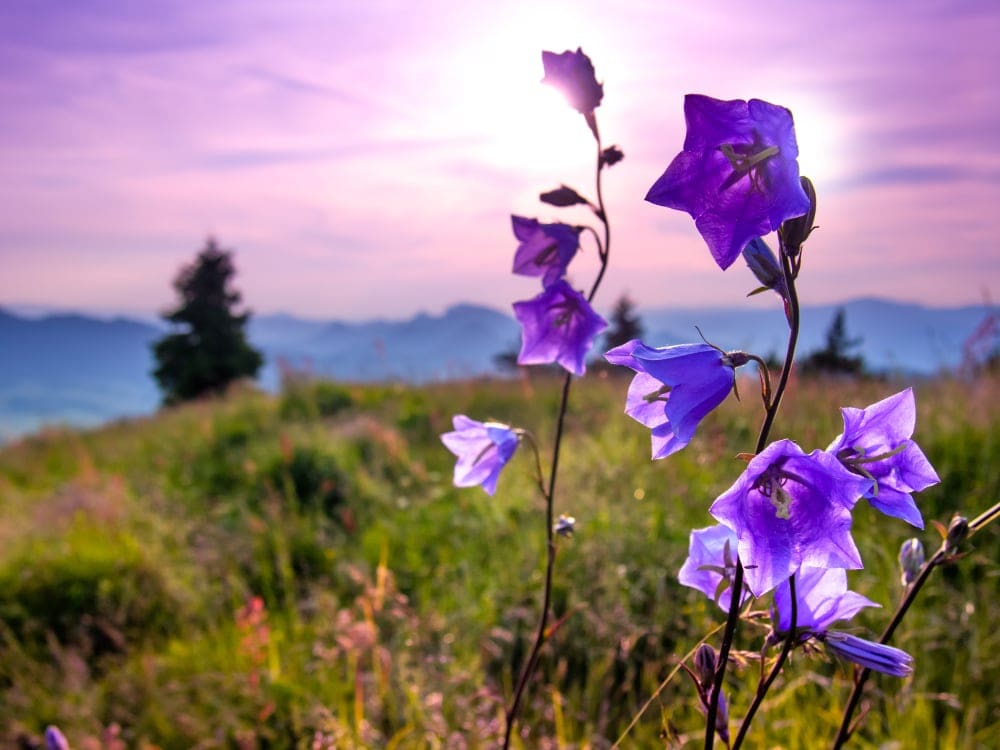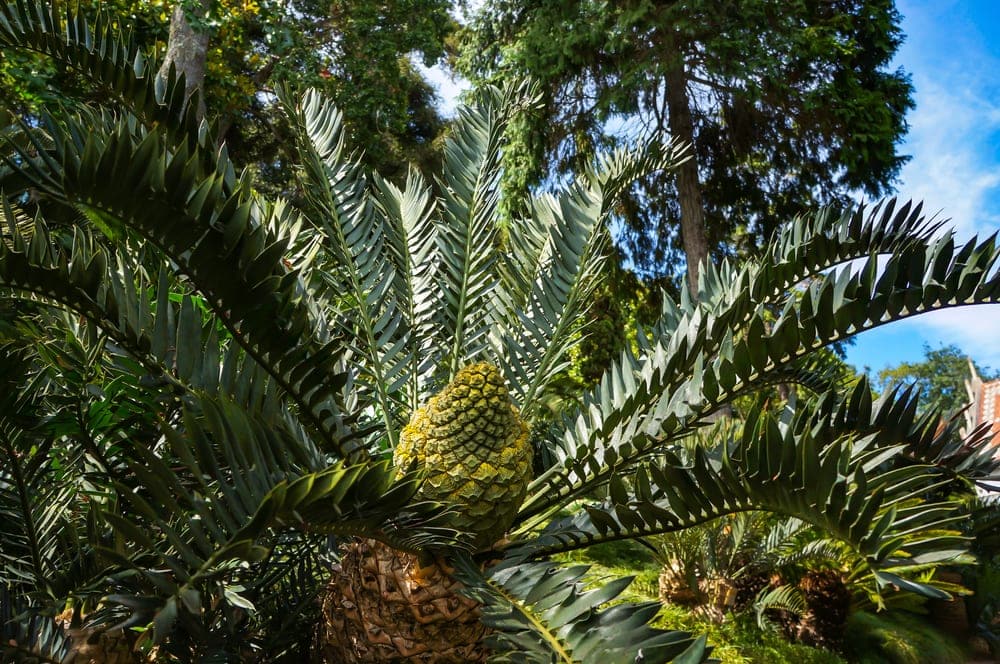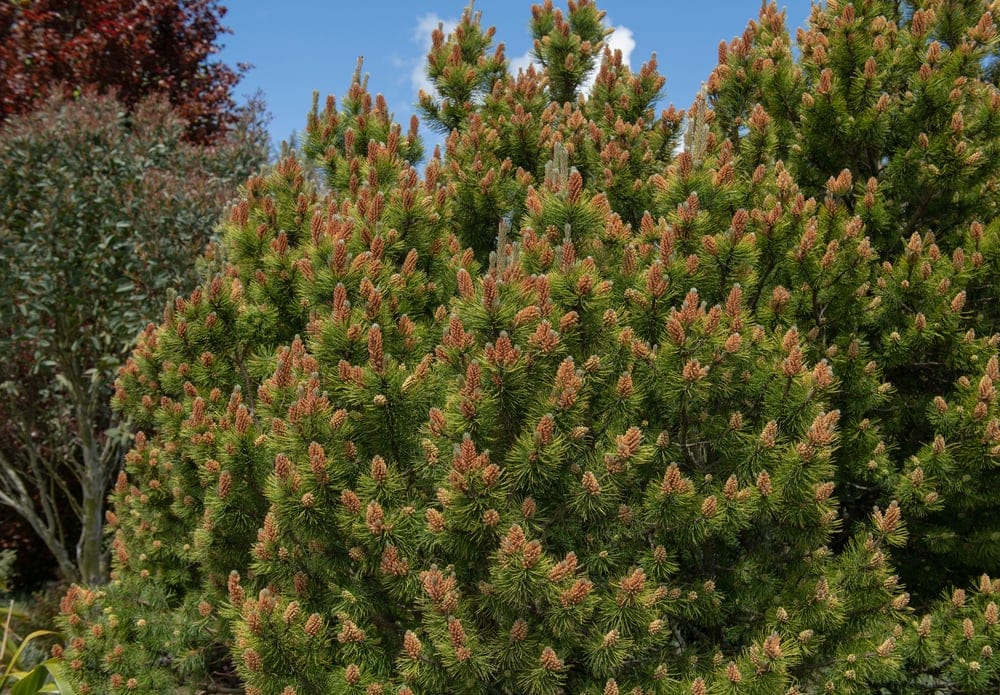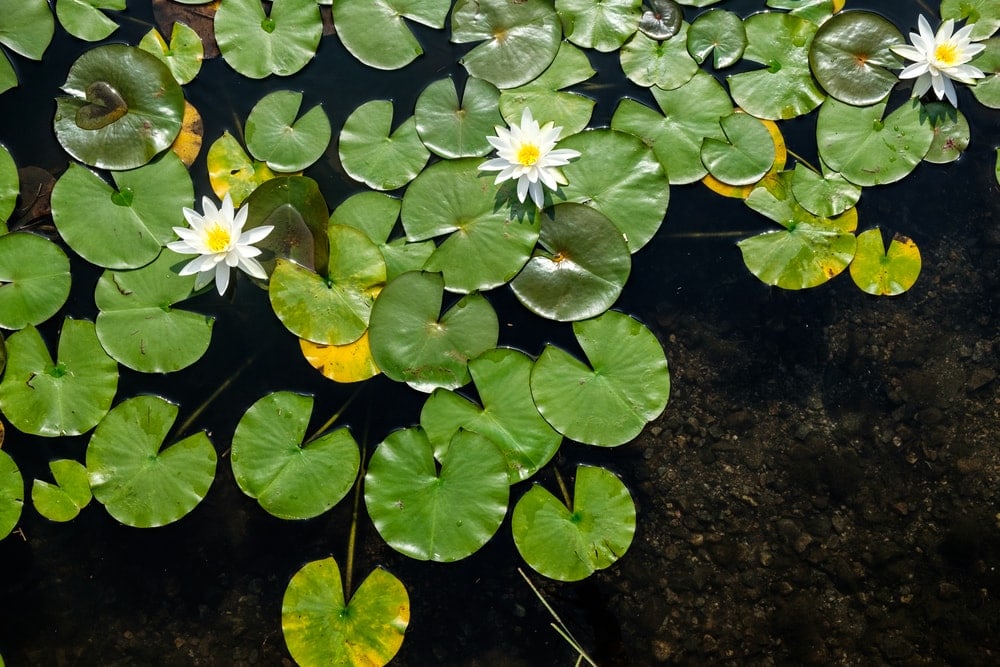There are all kinds of different people in the world. Often there are “plant people” and animal people,” although they can overlap. Some people love the plant world. They relish a healthy palm growing in their window or a beautiful vine spilling over their bookshelf.
Others have never fancied themselves a plant person or don’t believe they have a “green thumb.” Often, knowing more about something is what enables you to excel at it. Use this article to understand plants, where they come from, how we classify them and more.
We start with looking into what sets plants apart from animals. Then, we take a deeper look at the current classification system of plants. Be aware that there are always changes happening to how plant and animal species are classified. If you need to know something specific about a family or species, you should look up the most accurate information at the time.
Once you have cultivated a better understanding of a plant’s classification, we dig a bit deeper. We look into each one of the primary divisions. Then, we look at specific species and identify which order and family they belong to under the umbrella of the Plantae Kingdom.
Without further ado, let’s dig in! (Pun intended.)
Plant Classification

The Plantae Kingdom includes thousands of different species and typologies. Although it isn’t the largest kingdom, it accounts for a large portion of the living world.
Three defining characteristics help scientists distinguish between plants and animals. These include:
- Plants have chlorophyll. Chlorophyll is a green pigment essential for photosynthesis. It typically resides in the individual cells of the plant to ensure the plant can live and process efficiently.
- Plants stay in one place for the most part. Because of their root systems, plants can’t move from one place to another, unlike many animals.
- Plants have cell walls made from cellulose. This material makes the plants sturdy, helping the plant maintain their shape.
After their division from the Animal Kingdom, the Plant Kingdom breaks down further. It contains two primary groups: seedless plants and plants that reproduce using seeds. Seedless plants are broadly called Cryptogams, while seed-bearing plants are called Phanerogams.
To be clear, these are not formally recognized as scientifically accurate groups any longer. They did back when Carl Linnaeus began the classification system. However, now they serve as a good base point from which to understand the plant kingdom.

Share this Image On Your Site
<a href="https://outforia.com/types-of-plants/"><img style="width:100%;" src="https://outforia.com/wp-content/uploads/2021/07/Infographic-Types-of-plants-outforia-0721-1-410x1024.jpg"></a><br> Types of Plants Infographic by <a href="https://outforia.com">Outforia</a>We will start with cryptogams and break them down even further into distinct families with specific species examples later in the article.
Cryptogams, or Cryptogamae, are plants without seeds or flowers..
Although they are technically in the Plantae Kingdom, they are often called “plant-like organisms” instead of true plants. At the beginning of the classification system, plants were primarily defined by the fact that they reproduce using flowers and seeds.
The name “cryptogamae” comes from two Greek words. The first is kryptos, meaning “hidden.” The second is gameein, meaning “to marry.” The phrase refers to the hidden reproduction systems of the plants.
Within Cryptogamae, the species that belong under the umbrella of the Plant Kingdom include:
- Thallophytes (Algae)
- Bryophytes (Moss)
- Pteriodophyta (Ferns)
Fungi are also under the umbrella of cryptogams, but these do not belong to the plant kingdom.
Scroll down further to see the breakdown of these groups and species-specific to them.
The next group of plants is the Phanerogams. These are divided into two major subcategories, including gymnosperms and angiosperms. All these plants have seeds. However, the way the plant produces and covers the seed determines the difference between the two groups.
Gymnosperms, for example, come from the Greek meaning “naked seed.” The seeds aren’t enclosed by anything, unlike flowering plants like angiosperms. Gymnosperms include plants like conifers, which have seed-bearing structures like cones.
An interesting fact for you before we move on: 65% of the gymnosperm species are dioecious. That means they have distinct male and female plants. If you want fertilized seeds, it will mean that you need to plant two, one of each type.
Angiosperms are the other primary group. They make up many of the types of plants we think of when discussing the Plantae Kingdom.
Angiosperms are classically seed-producing plants. They produce flowers that have male and female parts. Sometimes the species are dioecious, but many times a flower will contain both the male and female parts.
From the flowers of a plant comes its fruit. Unlike the gymnosperms, their seeds are not naked. Instead, they are protected by the fruit of the plant, no matter how small.
Now you have an idea about the overarching classifications of the plant kingdom. Let’s dig into the divisions even further and their related species.
You may also like: Butterfly Identification Guide: 29 Popular Types of Butterflies, with Images and Facts!
21+ Types of Plants You Should Know
As we did in the classification explanation, we will begin with the cryptogams. These are the plants you might not have thought were plants. From the algae in the neighbor’s pond to the moss that grows in shady spaces, they are all plants.
1.0 Cryptogams

Cryptogams are seedless plants. They have three main divisions that we talked about at the beginning. These plants are often considered more basic life forms. Some scientists believe that most of our plants evolved out of these organisms. This theory is still widely debated, though.
Thallophytes are divided even further into three primary groups, and species break out from there. Interestingly, it is their color that sets plants apart. The color has a notable effect on the way that the plants function.
As always, the Greek etymology of the word helps us learn more about its distinction. In this case, thallus means “a body without root, leaves, or stems.” Phyton means “plant.” if you have ever looked closely at a piece of algae, you will see that this is true. It doesn’t have almost any parts that plants usually do. They are some of the most primitive examples of plants.
Although you might think that that would mean they aren’t plants, they still have cellulose on their plant walls. Most algae are aquatic, but they can also grow in symbiotic relationships with animals and other plants. Altogether, there are approximately 30,000 species of algae. We are only going to talk about a few.
1.1 Green algae

Chlorophyceae are called green algae because of their grass green color caused by pigmented chlorophyll a and b. They have rigid cell walls with an inner layer of cellulose and an outer of pectose. Some of the examples of Chlorophyceae species include:
- Volvox
- Chlamydomonas
- Ulothrix
- Chara
- Spirogyra
1.2 Brown algae

These algae are commonly called brown algae. For the most part, they are marine algae coming in brown, olive green, and yellow shades. The colors are caused by chlorophyll A and C, as well as xanthophylls and carotenoids.
These types of algae can have highly branched, filamentous threads, such as in the case of kelp species. Some of them can even reach lengths of 328 feet (100m). Some specific examples of Phaeophyceae include:
- Dictyota
- Sargassumand Fucus
- Laminaria
- Ectocarpus
1.3 Red algae

Rhodophyceae are commonly called red algae. They get their bright red color due to their red pigment from the r-phycoerythrin, chlorophyll-a, and -d within their cell bodies. Most of the red algae are multicellular and have complex body types.
Red algae are found in higher concentrations in regions of the world with warmer water. They typically reproduce by fragmentation. Examples of the species in the Rhodophyceae include:
- Porphyra
- Polysiphonia
- Gracilaria
- Gelidium
Bryophytes are considered the moss-type species of the plant world. They reproduce using spores instead of the flowers and seeds that angiosperms use. You can often find bryophytes in damp environments since they don’t have a lot of storage capacity.
There are three primary types of terrestrial non-vascular plants. These include all mosses, liverworts and hornworts. Non-vascular means that they don’t have any vascular tissue or xylem and phloem used to move water up and down a plant. We’re going to talk about few bryophytes plants.
1.4 Liverworts

Liverworts are the smallest of the Bryophyta plants. They are characterized by the undifferentiated types of leaves that line their flattened stems. Among the liverworts are single-celled rhizoids along with multi-cellular bodies.
Liverworts can most easily be separated from any of the other bryophyte species. They contain membrane-bound oil bodies in their cells. Some examples of liverwort species include:
- Marchantia
- Riccia
- Umbrella liverwort
There are more than 9,000 species of liverwort. These are spread all around the world. They are also among the dioicous plant species, having separate male and female plants that grow close together.
1.5 Mosses

Mosses are often the most recognizable of the bryophyte plants. They are often found in clumps of soft green as long as they live in damp environments outside of direct sunlight. Unlike the liverworts of the Bryophyta world, mosses have single distinct leaves attached to a stem. These leaves are only one cell wide, meaning they aren’t visible to the naked eye.
Mosses can take in a substantial amount of water. This capacity has made them extremely useful in the past. They have been used to pack in insulation and help with water absorption. A variety of moss is also used in potting soils as a source of peat to help balance water retention.
There are more than 13,000 species of mosses. Almost 11,500 of which belong to True Mosses, or the Bryopsida class of mosses. Other than Bryopsida, mosses have other classes, including:
- Andreaeopsida
- Sphagnales
- Polytrichales
- Oedipodiopsida
- Musciphyton
- Meesiaceae
- Tetraphidae
- Hepaticopsida
- Hypnanae
One of the species of moss includes the pincushion moss (Leucobryum glaucum). They form dense cushions, as their name would suggest. They often help to cover small invertebrates like springtails and moss mites.
1.6 Hornworts

Hornworts get their name from their characteristic horn-like sporophytes that develop from the typically flat-bodied plant. Hornworts have a gametophytic form that primarily comes in bright and dark forest shades of green.
Hornworts are flowerless and spore-producing plants. When they begin to get close to reproducing, they produce needle or horn-like spires that come up from it.
Hornworts grow on damp soil or rocks in tropical areas. These types of plants prefer to grow in temperate to tropical regions around the world.
Fun fact: Scientists consider hornworts to be some of the earliest plants that evolved on land, giving them an ancient lineage.
Some examples of species of hornworts include:
- Notothallus
- Anthoceros
- Ceratophyllum
Ceratophyllum hornwort is one of the most widespread hornworts and is often what people commonly call hornwort. Ceratophyllum demersum is a free-floating aquatic plant distributed throughout every continent, excluding Antarctica.
Pteridophyta plants are theoretically the step that comes between plants like moss and lichen and before flowering plants. For the most part, these kinds of plants are what dominated the landscape for millions of years. These plants look almost the same now as they did all the time ago.
Pteridophyta plants have four primary classes. These include:
- Ferns (Pteropsida)
- Horsetails (Sphenopsida)
- Whisk Ferns (Psilopsida)
- Club moss (Lycopsida)
1.7 Ferns

The Pteropsida is most commonly known as ferns. Ferns are another one of the plants that have likely been around for millions of years. There have been fossils found of ferns to date them back to the time of the dinosaurs.
Ferns are one of the more apparent cryptogams since they are so much larger than other varieties. They are all multi-cellular and look much more plant-like than many of the cryptogams.
Ferns still don’t reproduce using seeds. Instead, you can much more easily see their spores on the underside of their leaves in small clusters.
Ferns are somewhat different from the other Pteridophyta plants since they are so much more well-differentiated than them. They have clear stems, leaves and roots. Some examples of ferns include:
- Bird’s-nest fern
- Eagle fern
- Lady fern
- Ostrich fern
1.8 Horsetails

Horsetails are another common type of Pteridophyta. Although it might be obvious, they get their name from their shape. They have well-differentiated parts, with leaves that point upward and look bushy from erect stems. They appear to look like green horsetails sticking straight out from the ground.
Horsetails often have scaly stems, another great way to tell them apart from some similar-looking ferns.
Some examples of horsetails include:
- Field horsetail
- Rough horsetail
- Great horsetail
- Wood horsetail
1.9 Whisk Ferns

Psilopsida is the most distinct version of these plants and the most primitive. They look to be erect stems that stick straight out from the ground without any leaves. They do have leaves, but they are often mistaken for the spores that grow along their branches.
Psilopsida is vascular plants that grow without roots. Instead, they have branching rhizomes, a ground-level stem. They appear almost like coral would but are primarily terrestrial. Most of the species have become extinct, with only two living species left. These include Psilotum and Tmesipteris.
1.10 Club moss

Finally, there is Lycopsida or club moss. While some people consider these to be mosses according to their old classification, they have been separated. They have a much more well-differentiated plant body. That includes adventitious roots, rhizophores for reproduction, stems and leaves.
Examples of club mosses include:
- Running pine
- Ground cedar
- Alpine club moss
The species of club moss get their name because of their growth habit. Although they are much smaller, they look like mini conifers.
You may also like: Annual Vs. Perennial Plants: Unlock The Secrets To A Thriving Garden
2.0 Phanerogams

Phanerogams are the other side of the plant animal’s coin. They are all the plants in the world that have seeds and flowers. Another name for them is spermatophytes.
Phanerogams have two primary categories, the gymnosperms and the angiosperms. Seeds from plants are either enclosed in a cone or fruit and are the primary difference between these two subcategories.
Gymnosperms can also be called Acrogymnospermae. The name “gymnosperm” comes from the composite word in Greek gymnos and sperma. These translate to ‘naked’ and ‘seeds.’ That is because they aren’t covered in fruit but are contained in a cone without fleshy protection.
There are not many categories of gymnosperms. These include conifers, ginkgo, cycads, and gnetophytes.
2.1 Cycads

Cycads are a more exotic and ancient group of plants commonly associated with types of palm trees. There are about 300 species of cycads. They grow in the tropical and subtropical areas of the world, often with woody trunks and large evergreen leaves.
A cycad has a unique tree structure that doesn’t include branches. Instead, the leaves grow directly out from the trunk in a bundle.
Cycads are an interesting plant. They are palm-like without being palms, and their seeds are inside a cone-like structure without being a cone. Since the cycad doesn’t have a flower, the tree reproduces using beetles to pollinate the seeds. This is a characteristic of ancient plants. Cycads have an ancient lineage and have changed little since Jurassic times.
There are all kinds of different cycads, and they come in a large variety of sizes. Small cycads only have trunks that are a few centimeters tall, while others can be up to 50 feet (15m) tall. Since the leaves grow from the trunk, cycads can look like a cross between a large fern and a palm tree.
There are three primary families in the cycad group. These include:
- Cycadaceae
- Zamiaceae
- Stangeriaceae
A great example of cycad is the Cycas revoluta or the sago palm. These are widely cultivated species whose fronds almost look plastic because they are so stiff and glossy. You can find these for ornamental use and for planting outdoors if you live in a warm climate.
2.2 Ginkgo biloba

Ginkgos are an incredible plant originating from the Mesozoic Era. In the modern age, ginkgos have practically no predators since they have outlived almost everything that would eat them.
Ginkgo trees are also called the Maidenhair tree. The entire subclass only contains one extant species, Ginkgo biloba. For this reason, they are also called living fossils. There were other species in the genera before that have died out throughout hundreds of thousands of years.
It is easy to identify ginkgo even though it looks more like a typical deciduous tree, unlike other gymnosperms. These trees have fan-like leaves with two lobes.
2.3 Gnetophyta

Gnetophyta is one of the less well-known subclasses of the gymnosperms. They look almost like an octopus crawling across the dry Sahara or desert sands in which they live. They have a central point that their long, thin leaves grow in a whirling pattern. They are mostly shrubs or woody vines. Within the gnetidae subclass, there are about 90 species of gnetophytes.
Similar to the tendency of a typical gymnosperm, the Gnetophyta reproduce using cones or strobili.
2.4 Conifers

The Pinidae is the largest subclass within the gymnosperm category. There are thousands of species within this class. These include things like conifers. Conifers are also the most common type of plant that is associated with gymnosperms. They have the classic growth and reproductive patterns typical to the category.
Conifers are cone-bearing which protects their seeds. They are perennial and woody plants that are often either trees or shrubs.
Some examples of conifers include:
- Douglas-fir
- Juniper
- Larches
- Cypresses
- Redwoods
2.1.1 Extinct Orders of Gymnosperms
- Bennettitales
- Erdtmanithecales
- Pentoxylales
- Czekanowskiales
Angiosperms include the typical flowering plants that we consider if we asked to call one to mind. These include flowers like tulips and daffodils as well as larger plants such as deciduous trees. Some of the flowers and fruits from these plants are less obvious, while others have flowers that steal the whole show.
For the most part, a plant’s flower is based on its pollinator. Orchids are primarily pollinated by flying beetles, bees and other airborne insects. Because of this, they have a “landing strip” petal to help the pollinator access the inside of the flower.
If the pollinator is a bat, bird, bee or another bug, the flowers will differ based on their needs. This is nature’s way of working together to support each other symbiotically.
Angiosperms are bundled into eight orders. Without further ado, let’s dig in.
2.5 Amborella trichopoda

You would think that with so many flowering plants, the species would be divided up more evenly. However, there are only one species in this order. Amborella trichopoda is a native plant species to New Caledonia.
They are distinct and held apart because of their genetics and significance. Scientists believe that these plants represent the earliest plant with diverging branches among all the flowering plants. In other words, it is a symbol of history.
2.6 Water lilies

What do you think of when you see the word “nymph”? If you are familiar with Ancient Greek mythology, the word likely calls to mind a picture of a water woman rising from a river or a creek.
The plants in this order embody that reasonably well since they are primarily the aquatic flowering plants of the world. There are about 80 species within this order, split between three families. Those include:
- Hydatellaceae
- Nymphaeaceae
- Cabombaceae
Again, this order is thought to be one of the earlier ones that began to diverge. Water lilies are a great example of the kind of plants you will find in this order. They belong to the Nymphaeaceae family.
You can find them in any type of bodies of water all over the world. They function to help clean water and thrive off of poor water and soil quality, so you will often see natural lilies in scummy pools.
2.7 Star anise

The order Austrobaileyales is the third and last order grouped under the umbrella of “basal angiosperms.” That means they are examples of the earlier divergences of angiosperms as they began to develop and break away from life forms such as algae and moss.
The order Austrobaileyales is like another step in this process before you get to the “core angiosperms.” There are about 100 species of various woody plants in this order. These plants form a link between the simpler angiosperm orders above and those core angiosperms that follow below.
This order has only three families, similar to the Nymphaeales order. These include:
- Austrobaileyaceae
- Trimeniaceae
- Schisandraceae
These plants, particularly those in the Trimeniaceae family, have powerful healing capabilities. They often bear essential oils and are widely used and cultivated throughout the world.
One of the most well-known species exemplars from this order is the Star Anis or Illicium verum. It is the tree that produces the anise spice in star shapes. These evergreen trees grow in Asia, particularly the northeast of Vietnam and southwest China.
2.8 Magnolia plant

The order Magnoliids contains all kinds of plants, accounting for almost 9,000 species of them. Some of them are simple angiosperms sharing characteristics with gymnosperms. Others are more developed and set apart from the simpler groups of flowering plants.
Some of the recognizable species in this group include plants like:
- Nutmeg
- Bay laurel
- Cinnamon
- Magnolias
- Avocado
- Tulip tree
- Black pepper plants
2.9 Lotus

The order Chloranthales contains about 77 known species. The order is best known for its usefulness in the field of medicine. These plants have set themselves apart by being one of the most developed yet earlier-diverging plant lineages. Thus, they are not closely related to any of the other families of flowering plants.
One of the most exciting things about this order has to do with its type genus, Chloranthus. The pollen of these plants had shown up on the fossil record extending back to the beginning of history when we first recorded flowering plants in the Early Cretaceous period. Not only that, pollen has been found on all continents.
Some examples of plants in this order include:
- Sarcandra glabra (Bone-knitted Lotus)
- Hedyosmum
- Ascarina lucida
2.10 Coontail

You might think that the plants that belong to the order Ceratophyllales should be basal angiosperms. However, they are very well-diverged, although they don’t have roots. They are distinct in their needs and appearance. This order includes the four flowering plant species that you can often find in streams, ponds and marshes, calmly floating back and forth.
The common name for the plants in this order is coontail because of their almost fluffy appearance. Although they do flower, the flowers are pretty small and inconspicuous.
2.11 Orchids

The following two families are often what a biologist or horticulturist would study as angiosperms. Monocots and dicots, or eudicots, account for the vast majority of the plants that we grow and use.
Monocots are characterized by having three-petaled flowers. They usually have parallel veins in their leaves and a single cotyledon. There are more than 70,000 species that grow under the banner of monocots. Some of the plant types include:
- Orchids
- Palms
- Grasses
2.12 Dicot

Finally, we have the order Eudicots, more commonly known as “dicot” plants. These species contrast monocots by having four or five-petalled flowers and branching veins on their leaves. There are approximately 175,000 species of Eudicots.
Some plant examples from this order include all kinds that we use and grow for ornamental usage. These include:
- Petunia
- Apples
- Oak
- Sunflowers
- Buttercup
You may also like: How To Identify Mushrooms: A Guide To Building The Skill For The Field
Interesting Facts About Plants

1| The tallest tree in the world is shrouded in mystery.
The tallest trees in the world are redwoods. Redwoods tower above the forest floor, reaching heights of about 300 feet (91m). The exact location of this tree is kept secret since park rangers in California don’t want public interaction to put it in danger.
The tree’s name is just about as tremendous as its height, Hyperion. Overall, the tree measures 379.7 feet (115.7m) tall. It was discovered in 2006 and was deemed the world’s tallest tree.
2| There are more than 80,000 species of edible plants.
Out of these, humans eat 90% of their food from only 30 plants. That means that if you are ever in the mood to try something new, there is likely a whole host of flavors that you haven’t gotten yet.
3| Tulip bulbs used to be more valuable than gold.
In the 1600s, the bulbs of tulips, particularly those with unique colorations, were precious. They became a form of currency for some on the continent.
At the time, the Dutch currency was called a guilder. At the height of their popularity, a single tulip bulb could sell for 10,000 guilders. A conversion we might understand would equate the value of 10,000 guilders to a mansion on the Amsterdam Grand Canal.
4| Carnivorous plants don’t live in the soil and get their nutrients from insects.
These include things like pitcher plants and sundew plants. Some of the most common include venus flytraps. Did you know, the more you make your venus flytrap close, the closer it gets to death? It takes substantial amounts of the plant’s energy storage just to open and close once.
You may also like: Learn the 47 Different Types of Pine Trees, From Flammable to Edible: Facts, Photos, and More!
FAQ

1. How much of the world’s forest have we lost?
We have lost approximately 80% of the world’s naturally occurring forests. Saying “we have lost” is also a bit of a misnomer since we have been at fault for their disappearance. The world’s forests have steadily disappeared due to human destruction, irreparable damage and climate change.
The cost of this loss is enormous, taking its toll on biodiversity and escaping climate change in a vicious circle. All this has happened to supply cheap timber around the world for the last millennia or two.
A great way to help fight the further degradation of our forests is to source your wood from a sustainable business. It is best to look for one that helps plant trees even as they are cutting them down. You could also look for wood from a tree farm instead of one that sources its wood from natural forests.
2. What is the tallest tree species in the world?
The tallest trees in the world reside in California. These are commonly called redwoods. Their scientific name is Sequoia sempervirens. The Greek hints at the idea that these trees can live forever. With modern tree dating methods, we have been able to test this hypothesis, and they did seem to be on to something when the scientists named this tree.
The oldest coastal redwood has lived for about 2,520 years. The oldest giant sequoia they have dated so far is estimated at 3,200 years old.
3. Can trees talk to each other?
Plants might not be able to move or make a sound. However, that doesn’t mean we should forget that they are still living creatures. Scientists have done all kinds of studies on how plants might communicate with each other. It turns out that they do have a means of “talking.”
Instead of using mouths, they often communicate to surrounding plants using their root systems and soil fungi. They communicate using chemical compounds spread throughout their roots to communicate their needs. Some scientists compare it to a neural network of a human to aid in understanding.










